I'm struggling to modifing the colour/shape/... of the points based of if it's a missing value or not.
library(ggplot2)
library(naniar)
ggplot(data = airquality,
aes(x = Ozone,
y = Solar.R)) +
geom_miss_point()
airquality_no_na <-airquality[!(is.na(airquality$Ozone) | is.na(airquality$Solar.R)) ,]
airquality_na <-airquality[(is.na(airquality$Ozone) | is.na(airquality$Solar.R)),]
ggplot() +
geom_point(data = airquality_no_na,
aes(x = Ozone,
y = Solar.R, colour = "NoMissing")) +
geom_miss_point(data = airquality_na,
aes(x = Ozone,
y = Solar.R, colour = "Missing")) +
scale_colour_manual(name = 'Legende',
values =c('NoMissing'='green',
'Missing'='blue'))
I don't know how to make the missing value in green and the non-missing value in blue without spliting in two dataframe.
EDIT :
My issue was a bit more complexe. I want to have the possibility to choose the color for the first data set (missing in blue, not missing in green) ans the second data set (missing in red, not missing in yellow)
#Create dataframes
df1=as.data.frame(matrix(data=runif(n=200, 0,1),ncol=2))
df2=as.data.frame(matrix(data=runif(n=100, 0,1),ncol=2))
#Add missing values
df1[rbinom(n=100,size=1,prob = 0.1) ==1,1] <- NA
df1[rbinom(n=100,size=1,prob = 0.1) ==1,2] <- NA
df2[rbinom(n=50,size=1,prob = 0.1) ==1,1] <- NA
df2[rbinom(n=50,size=1,prob = 0.1) ==1,2] <- NA
#This doesnt work. It only print in blue (missing) and green (not missing)
ggplot() +
geom_miss_point(data = df1,
aes(x = V1,
y = V2)) +
geom_miss_point(data = df2,
aes(x = V1,
y = V2)) +
scale_colour_manual(values = c("blue", "green", "yellow","red"))

